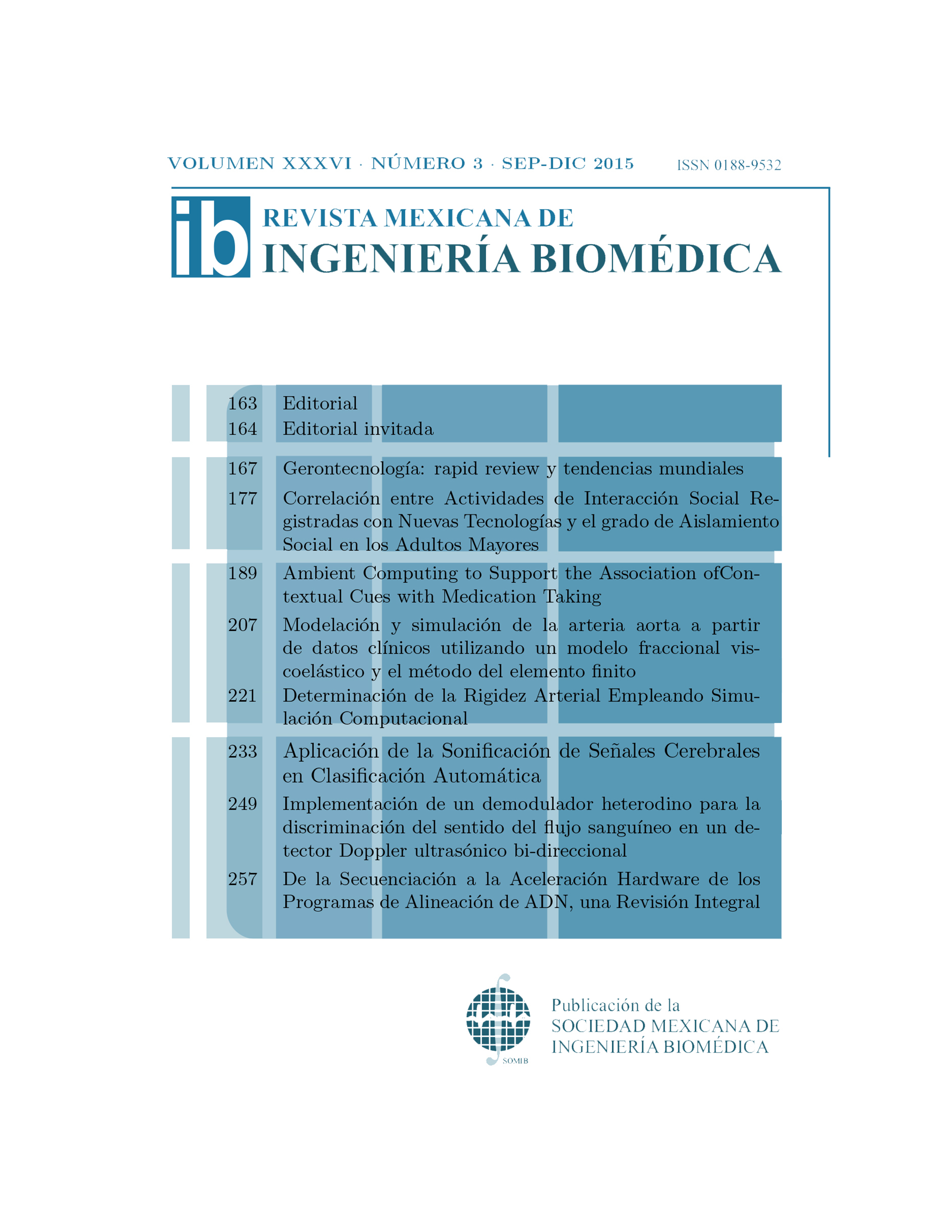Modeling and simulation of the aorta from clinical data using a fractional viscoelastic model and finite element method
DOI:
https://doi.org/10.17488/RMIB.36.3.1Keywords:
Biomechanics, Biomedical materials, Fractional calculus, Artery, Finite element method, Medical imagesAbstract
The modeling and simulation of the biomechanical effects present in the aorta, give the health specialist a computational tool that can be used in the prevention and treatment of cardiovascular diseases. For that reason on this research a mathematical model was developed in order to implement digital dimensional simulations to analyze the mechanical behavior of arteries. First, its described the methodology used in the construction of the geometry of the artery based on images from a CT scan, next the necessary experimental tests to obtain mechanical parameters required by the model and finally his fractional order. Obtaining a finite element simulation where the areas of greatest stress concentration and the displacement field are identified. To obtain these results a novel formulation based on fractional order viscoelastic models was used and the values required for simulation were obtained through the complex modulus.
Downloads
Downloads
Published
How to Cite
Issue
Section
License
Upon acceptance of an article in the RMIB, corresponding authors will be asked to fulfill and sign the copyright and the journal publishing agreement, which will allow the RMIB authorization to publish this document in any media without limitations and without any cost. Authors may reuse parts of the paper in other documents and reproduce part or all of it for their personal use as long as a bibliographic reference is made to the RMIB. However written permission of the Publisher is required for resale or distribution outside the corresponding author institution and for all other derivative works, including compilations and translations.








